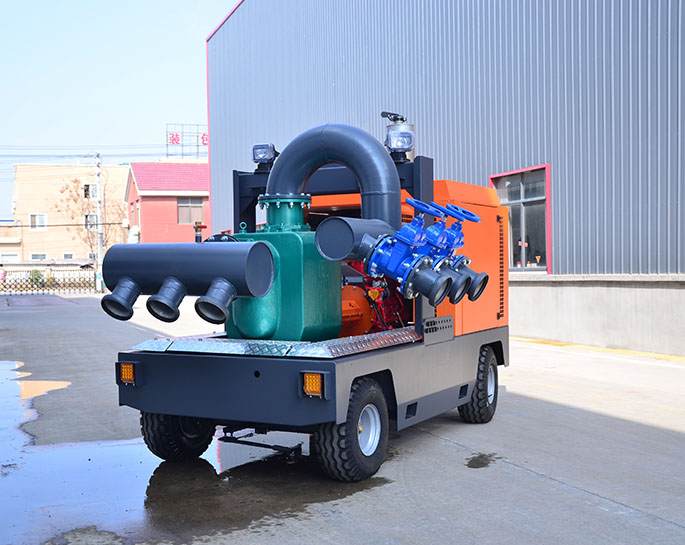Mobile pump truck components
Mobile pump trucks, also known as pump trailers, come equipped with various components designed to facilitate the transfer of fluids, including liquids and slurries. The specific components may vary depending on the type and purpose of the pump truck. Here are some common components you can find in a typical mobile pump truck:
-
Chassis: The chassis serves as the mobile platform on which the pump and other components are mounted. It provides stability and mobility to the pump truck.
-
Pump Unit: The heart of the mobile pump truck, the pump unit, is responsible for drawing in, transporting, and discharging the fluid. The type of pump can vary (e.g., centrifugal, piston, diaphragm, or concrete pump) depending on the intended use.
-
Engine or Motor: Mobile pump trucks are usually powered by an internal combustion engine (diesel or gasoline) or an electric motor. This component drives the pump and provides the necessary power for operation.
-
Control Panel: A control panel houses the operating controls, which allow the operator to start, stop, and regulate the pump's operation. It often includes gauges, switches, and indicators.
-
Hoses and Fittings: Mobile pump trucks are equipped with hoses and fittings to connect the pump to the source of the fluid or the destination where the fluid is to be discharged. These hoses are typically reinforced to handle the pressure and flow rate of the pump.
-
Boom or Hose: In the case of concrete pump trucks, a boom is used to deliver concrete to hard-to-reach or elevated areas. For other pump trucks, a flexible hose is used to transport the fluid to its destination.
-
Prime System: Many mobile pump trucks have a priming system to ensure that the pump is filled with the fluid and ready to start pumping. This can include a vacuum or positive displacement system.
-
Fluid Reservoir: Some pump trucks have a built-in reservoir or tank for holding the fluid, particularly if they are used for dewatering or firefighting. Concrete pump trucks may not have a dedicated reservoir as they draw concrete from an external source.
-
Filters and Strainers: Filters and strainers are used to remove contaminants and debris from the fluid, preventing them from entering and damaging the pump.
-
Valves: Valves are used to control the flow and direction of the fluid. They can be manual or automated, depending on the design of the pump truck.
-
Hydraulic System: For mobile pump trucks with hydraulic components, a hydraulic system is responsible for controlling the movement of the boom or hose, allowing for precise placement of the fluid.
-
Outriggers and Stabilizers: To ensure the stability of the pump truck during operation, outriggers or stabilizers are extended to provide a secure base. These are especially important for concrete pump trucks.
-
Safety Features: Various safety features may be included, such as emergency stop buttons, alarms, and safety interlocks to protect operators and the equipment.
-
Lighting and Reflectors: For safety and visibility during nighttime or low-light conditions, mobile pump trucks are often equipped with lighting and reflectors.
-
Toolbox and Accessories: Some pump trucks have toolboxes and compartments to store essential maintenance tools, accessories, and spare parts.
The specific configuration and components of a mobile pump truck can vary based on its intended application, whether it's used for concrete pumping, dewatering, firefighting, or other fluid transfer tasks. Regular maintenance and proper operation of these components are essential for safe and efficient use.


.png)
.png)

.png)


